 Description of the Hawksbill Turtle
Description of the Hawksbill Turtle
(Eretmochelys imbricata)
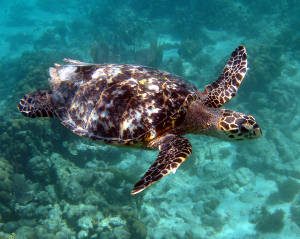 Dorsally brown (dark to light) in hatchlings, often boldly marked with amber and brown variegations in juveniles and younger adults; underside light yellow to white, sometimes with black markings (especially in Pacific specimens).
Dorsally brown (dark to light) in hatchlings, often boldly marked with amber and brown variegations in juveniles and younger adults; underside light yellow to white, sometimes with black markings (especially in Pacific specimens).
*source: Pritchard & Mortimier (1999)
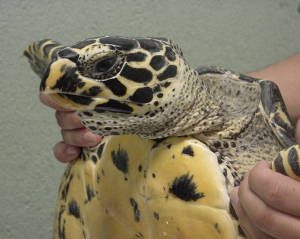
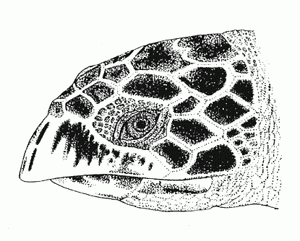 Relatively narrow; width to 12 cm; with a straight bird-like beak; two pairs of prefrontal scales.
Relatively narrow; width to 12 cm; with a straight bird-like beak; two pairs of prefrontal scales.
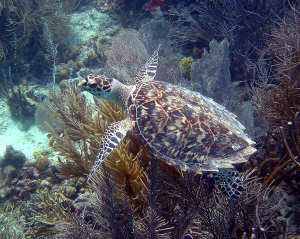
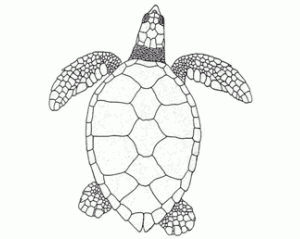 Oval, with a strongly serrated posterior margin and thick overlapping (imbricate) scutes (except in hatchlings and some adults); four pairs of costal scutes, each with a slightly “ragged” posterior border; straight carapace length (SCL) to about 90 cm.
Oval, with a strongly serrated posterior margin and thick overlapping (imbricate) scutes (except in hatchlings and some adults); four pairs of costal scutes, each with a slightly “ragged” posterior border; straight carapace length (SCL) to about 90 cm.
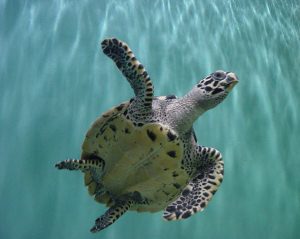
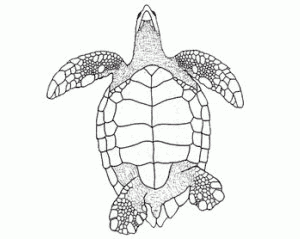 Yellow/gold in color (with dark blotches), typically four pairs of inframarginal scutes (without pores).
Yellow/gold in color (with dark blotches), typically four pairs of inframarginal scutes (without pores).